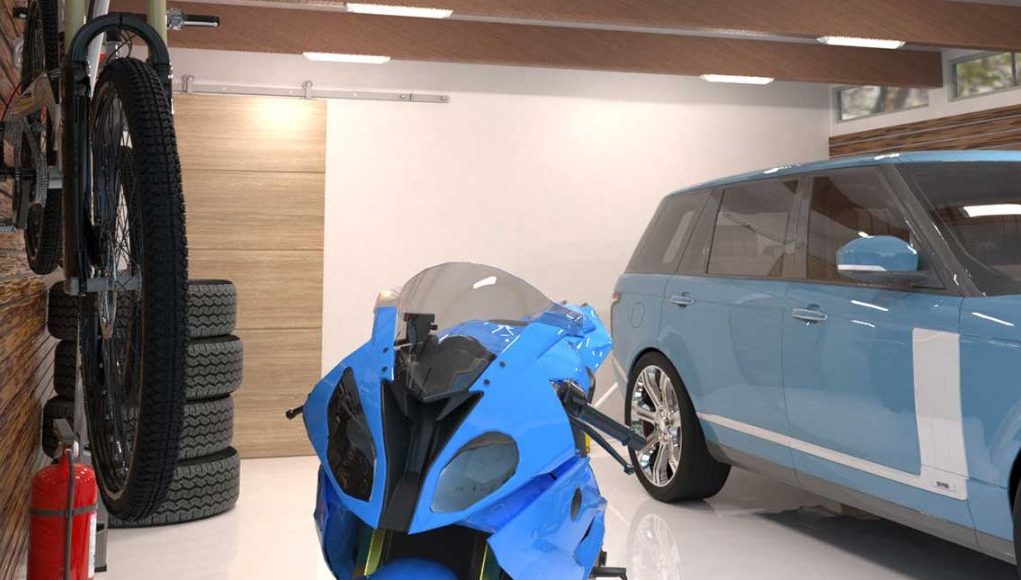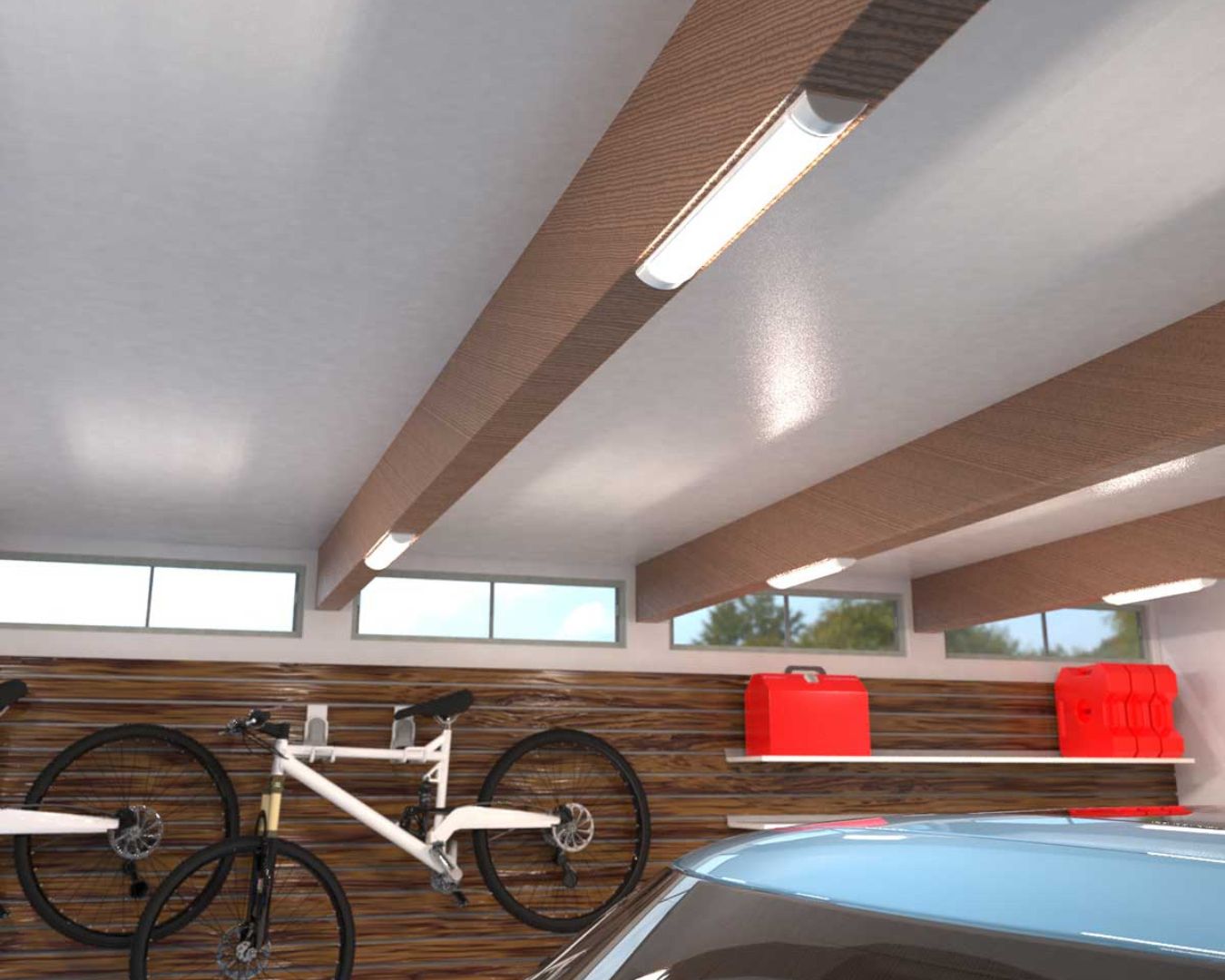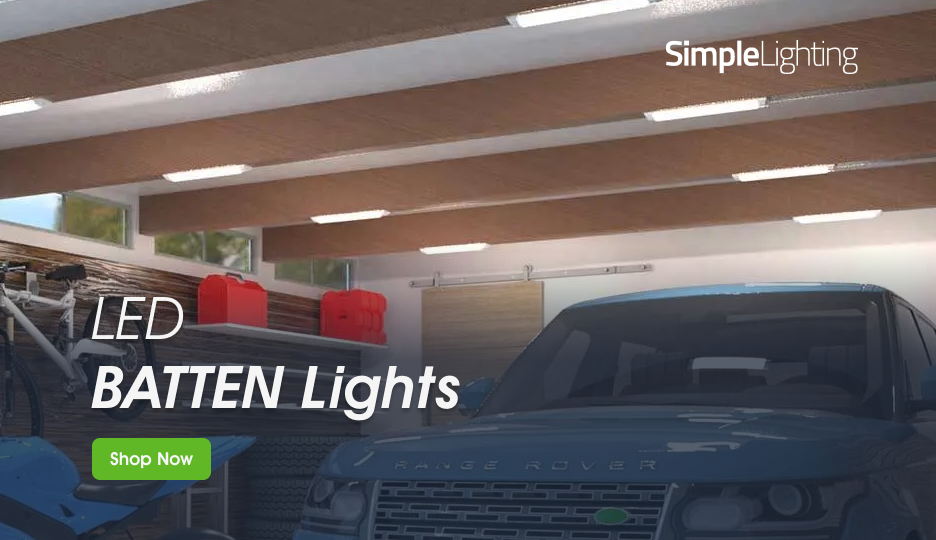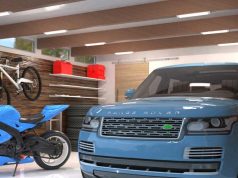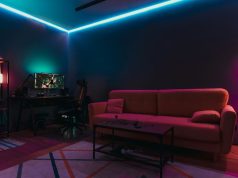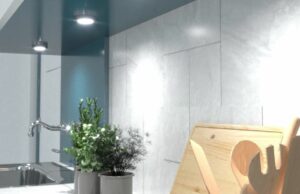Ah, garages. The shadowed corner of the home. Figuratively and, sadly, in most cases, literally. They’re cold, they’re often damp, and honestly, they’re not usually treated with the same love and care as the kitchen or living room. They usually just end up being the “overflow tank” of the home: anything that the house can’t hold is moved there.
So, lighting is a bit of a tricky thing. But we’re not going to be all gloomy about it because we actually have good news: We know the right lighting for your garage, so you can make it not only more usable but brilliant.
Gone are the [literal] dark days of garages. In this blog, we’ll break down the challenges of lighting cold or damp garages, explain why your current bulbs are “not working well,” and show you which fixtures can power through the chill and the condensation.
Ready to shed some light? Let’s dive in.
Challenges of Lighting in Cold or Damp Garages
Garages are typically exposed to extreme conditions, including low temperatures, fluctuating humidity, and the accompanying condensation.
That’s why you can’t just stick a light bulb in there and hope for the best. Your living room lights, most probably, should not be used as a garage light. Problems will start creeping in, sooner or later. Standard lights just aren’t built for the average garage environment.
How Low Temperatures Affect Lighting Performance
The low temperature was usually a problem for traditional lights in terms of performance.
Think of fluorescent tubes that need to warm up. They were the go-to lighting for garages. They were practical enough until winter rolls around and you end up shivering in the cold with a flickering light, waiting for it to finally warm up and give off a steady light.
For lights that require heating filaments and other components, cold is a natural enemy.
But then came LEDs. They don’t need to heat up to give instantaneous light. It doesn’t matter whether your garage is at 10°C or -10°C, an LED light will fire up instantly (and at full brightness)! No more fumbling in the cold darkness. But then there’s the moisture.
Dealing with Moisture, Humidity, and Condensation
That’s right, condensation does not only happen to clouds. Whenever cold air meets warm air, condensation happens. That’s the simplest explanation. An example of this is when you pour cold water or soft drinks into your glass and it starts to “perspire.” That’s condensation. And it’s not good for lighting!
Condensation clings to surfaces, drips down walls, and, unfortunately, finds its way into light fittings. Moisture is a lighting fixture’s worst nightmare, leading to rust, electrical shorts, or simply a short lifespan.
The simple, straightforward solution? Waterproofing. Yes. Some lights come with a protective seal that keeps water and humidity out.
Raincoat for lights? Sign us up! This is why checking out the ingress protection of your lights is important. The higher the IP rating (we’ll get into that in a moment), the better your fixture can handle moisture. Oh, and dust.
Safety Considerations for Electrical Installations in Harsh Conditions
Lighting is not just about keeping the lights on. It’s about keeping them (and you) safe. Water and electricity don’t exactly make a great pair when mixed together.
Therefore, selecting fixtures with the correct IP rating (Ingress Protection rating) is crucial. As you should already know, condensation and dampness are common in garages. That’s why IP65-rated fixtures or higher are the gold standard.
Why IP65? That’s because these are dust-tight and protected against jets of water. For a fixture that can take a beating like this and keep working, condensation and dampness won’t be an issue.
To top it off, fixtures designed for tough environments are usually made with corrosion-resistant materials like aluminium. This stops the fittings from deteriorating over time, so you’re not left with cracked casings and exposed wires.
Long story short: proper garage lighting isn’t just brighter. It’s safer.
Choosing the Right Fixtures for Tough Garage Environments
Alright, now it’s time to talk about solutions. First things first: the good news. There’s a whole range of lighting designed specifically to handle cold, damp, and generally unwelcoming spaces (sadly, that means your garage).
IP-Rated LED Battens and Panels for Moisture Protection
If you’re like us and your garage doubles up as either a DIY workshop, gym, or even a glorified storage unit, you’ll want consistent, bright lighting. And yes, you’d want it to have even lighting, too.
LED battens are a fantastic choice. They’re sleek, efficient, and available in IP65-rated waterproof versions that laugh in the face of condensation.
LED battens spread light evenly, meaning no dark corners where spiders set up camp. (Some do still camp in bright areas, so always clean your ceilings, but hey, even lighting!) And as a replacement for the commonly used fluorescent tubes, they’re so much more energy-efficient, delivering more lumens while using less power.
If LED battens are a bit bulky for your taste, why not go for the flush look offered by another excellent lighting option? We’re talking about LED panels. There are recessed and surface-mounted options, giving you a modern, professional feel while also being robust enough to cope with moisture-heavy garages.
Cold-Weather-Ready LED Lights That Maintain Brightness
Let’s not forget temperature. LEDs are naturally better suited to cold climates, but not all LEDs are created equal. Some high-quality garage-ready LEDs are specifically designed to operate in sub-zero conditions without dimming or losing efficiency.
This is particularly important if you use your garage in winter mornings or late evenings when temperatures drop to freezing.
With the right LEDs, you won’t notice a difference in brightness or performance. Your lights will stay strong, steady, and reliable throughout the cold spell.
And as an added bonus? Your energy bills will thank you for using LEDs. They use up to 80% less power than traditional bulbs, so you can leave them on for longer projects without feeling like your electricity meter is spinning out of control.
Conclusion
Cold, damp garages don’t have to be gloomy or unsafe. And your garage lights don’t need to be fancy. They need to be well-protected, welcoming, and reliable year-round.
Old-school lights are a no-no for cold temperatures. But LED lights? They thrive. Just make sure that they have a high IP rating (IP-65 is the best start), so they’re protected against moisture.
Garages are a lot of things stuffed into one single space. It can be a storage, a workshop, or a personal fitness den, but one thing’s for sure: upgrading your garage lighting is one of the smartest investments you can make.
And with Simple Lighting’s durable, high-performance range of LED lights, you’ll never have to worry about flickering, failing, or unsafe fixtures again.
Save your garage from that single sad bulb that doesn’t do well in the cold. Give it lighting that’s as tough as the environment it’s in, and watch your garage become a space people actually enjoy going into.
Hey, at least that’s the dream.


